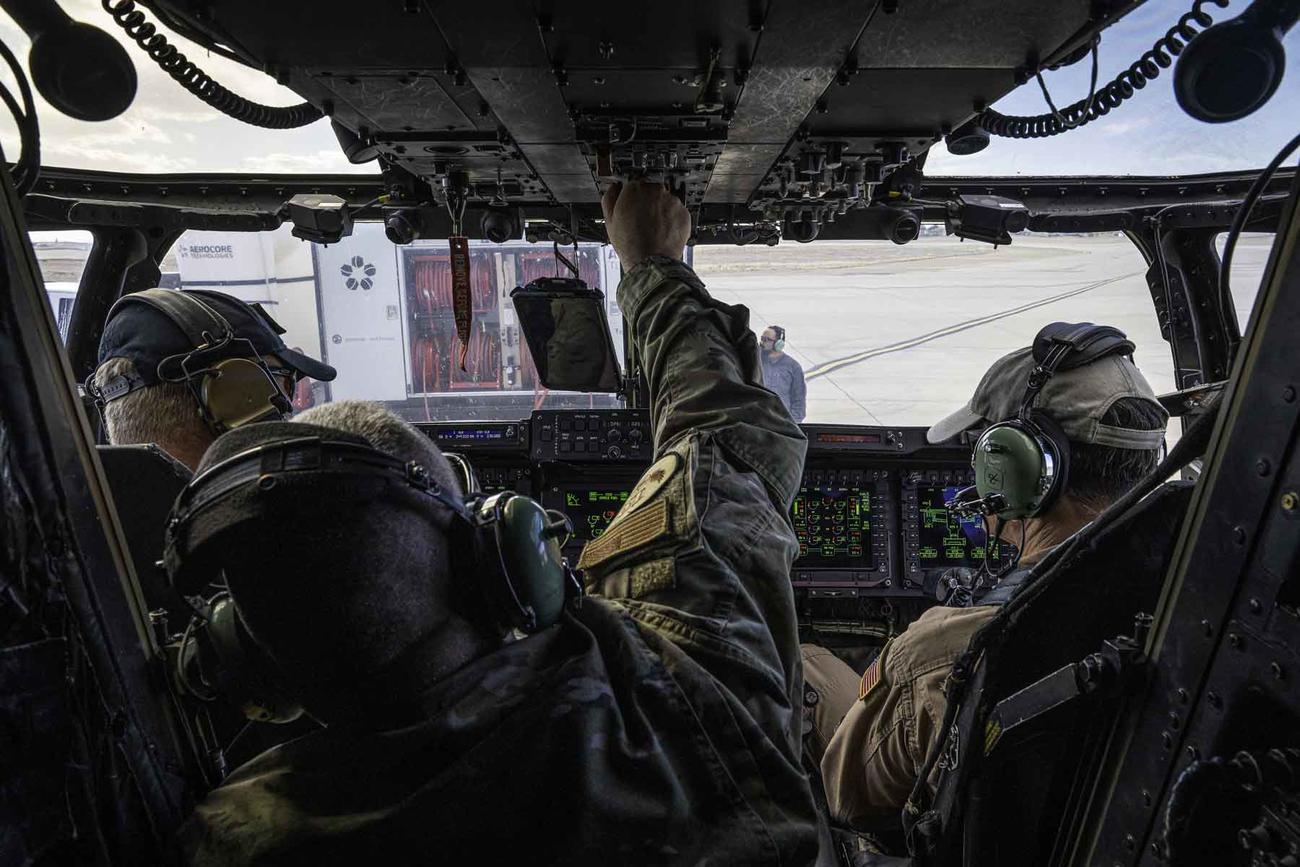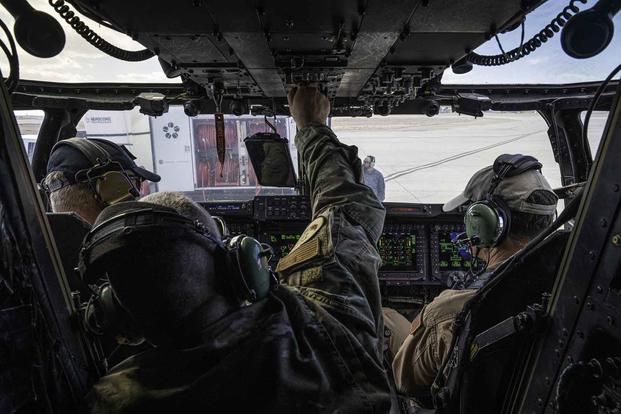

Air Force Special Operations Command may shift the number of its CV-22 Osprey pilots and aircrew as it reevaluates how the controversial tilt-rotor aircraft is used — and as officials probe the cause of recent deadly crashes.
The review of the size of the Osprey force is part of a larger analysis of the aircraft operations being conducted by Air Force Special Operations Command, or AFSOC, Lt. Col. Rebecca Heyse, a command spokesperson, told Military.com. It’s possible that those service members could be trained for other aircraft.
The crash of an AFSOC Osprey off the coast of Japan in November that killed eight airmen signaled the most recent mishap for the aircraft and triggered a monthslong grounding of Ospreys flown by the Air Force, Navy and Marine Corps. An investigation is underway to find the root cause of the mechanical issues that are believed to be causing Osprey mishaps, and the aircraft remains restricted to flying within 30 minutes of a safe landing space.
Read Next: Air Force Colonel in Alaskan Command Was Killed when Civilian Airplane Crashed into Alaska Lake
“AFSOC is currently evaluating all aspects of our CV-22 operations to ensure that we are properly organized, trained and equipped to conduct safe and effective missions,” Heyse said. “As part of this evaluation, we are considering various courses of action, including an analysis of the size of our CV-22 aircrew force.”
Heyse added that the command has “a long history of cross-flowing aviators into other AFSOC airframes” and said that “no final decisions have been made at this time.” The revelation that the size of the Air Force’s Osprey community could be in flux comes as officials continue the investigation into the deadly CV-22 crash off the coast of Japan.
The Air Force’s decision to look at the size of the Air Force CV-22 pilot and aircrew force also comes after Vice Adm. Carl Chebi, head of Naval Air Systems Command, said during a congressional hearing last week that all of the Air Force, Marine Corps and Navy Ospreys will not have the 30-minute flight restriction lifted “before mid-2025.”
“The primary goal of this evaluation is to ensure that our aircrews get the necessary experience and flight hours to operate the available aircraft safely and effectively, as well as have development opportunities throughout their careers,” Heyse added.
Spokespeople for the Marine Corps and Navy did not respond prior to publication on whether those services are undergoing similar evaluations.
The Air Force, Marine Corps and Navy grounded their Osprey variants for roughly four months after the deadly crash off the coast of Japan.
Marine and Navy aviators had their variants up in the sky within a month of the grounding being lifted in March, whereas the Air Force only recently stated that “several” of its aircraft were flying at Cannon Air Force Base in New Mexico “conducting aircrew currency flights.”
Military.com reported last month that the Joint Program Office guidance regarding the Osprey limits them to flights within 30 minutes of a suitable landing zone.
Officials with that office also told Military.com this week that they’ve recently developed “a leading theory” into a long-standing clutch issue responsible for a deadly 2022 crash in California that lead to the deaths of five Marines.
The cause of the November crash in Japan hasn’t been publicly released, but officials said at the time it was due to a mechanical failure — one that had never been seen before, according to officials.
– Konstantin Toropin and Drew F. Lawrence contributed reporting.
Related: After Deadly Crashes, New ‘Leading Theory’ on Osprey Issues Points to Sprag Clutches
